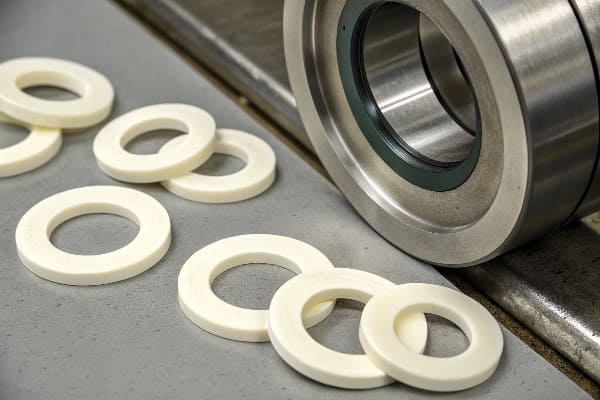Rubber washers and rubber gaskets are two essential sealing components, but their differences might not always be clear. Let’s explore the key distinctions to help you choose the right one.
Rubber washers1 and rubber gaskets are both sealing components2, but they differ in shape, material, and use. Understanding these differences can help you make the right choice.
Let’s dive into the details of each component to see which one suits your needs better.
What is a Rubber Washer?
A rubber washer is a flat, circular piece of rubber with a hole in the middle, commonly used in plumbing, electrical, and automotive applications. It creates a seal under pressure, preventing leaks.
Rubber washers are flat, circular pieces of rubber that create a seal between two surfaces, often used in plumbing and automotive applications.
When to Use Rubber Washers?
Rubber washers1 are ideal for sealing connections between pipes, faucets, and fasteners. Their flexibility makes them effective in preventing leaks when used in plumbing fixtures, taps, and similar applications.
Do Rubber Washers Stop Leaks?
Yes, rubber washers are designed to create a tight seal, preventing water or air from leaking through. When installed correctly, they can withstand pressure and provide a durable, long-lasting seal.
What Side Does a Rubber Washer Go On?
The rubber washer is placed on the side of the fastener or bolt that meets the surface requiring sealing. This ensures a tight seal and helps distribute pressure evenly.
What is the Difference Between a Rubber Washer and a Rubber Gasket?
Though both serve to prevent leaks, rubber washers and rubber gaskets are designed differently and are used for different purposes. Here’s a breakdown:
| Feature | Rubber Washer | Rubber Gasket |
|---|---|---|
| Shape | Circular, with a hole in the middle | Flat, may have a custom design or shape |
| Thickness | Generally thin and uniform | Varies in thickness based on application |
| Function | Seals between two flat surfaces, often with a bolt or fastener | Used to seal irregular or complex surfaces |
| Applications | Plumbing, automotive, electrical, faucets | Engines, machinery, HVAC systems, and high-pressure systems |
| Flexibility | Flexible but less customizable | Highly customizable for different sealing needs |
Why Are They Different?
The primary difference lies in their shape and how they create a seal. Washers are best for creating seals under pressure between flat surfaces, such as around bolts, while gaskets are used to seal more irregular, complex surfaces.
Can a Rubber Washer Replace a Rubber Gasket?
In most cases, no. Rubber washers and gaskets serve different functions. While washers are used under bolts to prevent leaks, gaskets are designed to seal large, irregular surfaces, such as engine parts or machinery.
What are Rubber Gaskets Used For?
Rubber gaskets are versatile sealing components2 that play a crucial role in creating airtight and watertight seals in various applications. From automotive engines to HVAC systems, gaskets ensure that no fluid or gas escapes through the joints.
Rubber gaskets are used in various industrial applications to prevent leaks. They’re commonly found in engines, HVAC systems, and machinery.
How Do Rubber Gaskets Work?
Rubber gaskets create a seal by filling the gaps between two mating surfaces. The rubber material compresses when the surfaces are tightened, forming a barrier that prevents leakage of air, liquids, or gases.
Where Are Rubber Gaskets Used?
Common applications for rubber gaskets include:
- Automotive engines
- HVAC systems
- Pipe fittings
- Industrial machinery
What Materials Are Rubber Gaskets Made Of?
Rubber gaskets are often made of materials such as:
- EPDM (Ethylene Propylene Diene Monomer)
- NBR (Nitrile Butadiene Rubber)
- Silicone rubber
- Neoprene rubber
Each material is chosen based on the application’s requirements, such as temperature resistance, chemical resistance, and flexibility.
Conclusion
Choosing the right sealing solution depends on the application. Rubber washers are best for sealing around bolts and fasteners, while rubber gaskets are ideal for irregular or complex sealing needs. Understanding the differences will help ensure you use the right component for your sealing application.
Footnotes:









